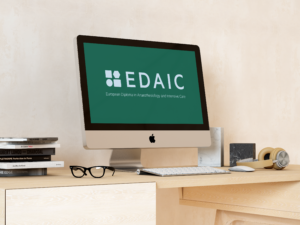Newsletter 2022
Newsletter September 2022: Errors, negligence, malpractice-and patient safety
Gabriel M.Gurman, MD
Chief Editor
This subject is far from being esoteric. It is an integral part of medicine in general, and especially of anaesthesiology.
In its 1999 report “To err is human: building a safer health system”, the Institute of Medicine (IOM) published the shocking estimate that up to 98,000 annual deaths were caused by medical errors in the United States (1).
I hope to be excused for reminding banalities to our readers. Still, I feel the need to start by enumerating some of the characteristics of our profession, which could explain the magnitude and importance of errors and negligence in this field of medicine and their impact on patient safety:
Anaesthesiology is a speciality which deals with what we call “temporary, reversible, pharmacological intoxication”. Sometimes, we take care of healthy “patients”, like in obstetrics. In contrast to half a century ago, there is no universally recognized absolute contraindication to anaesthetise a patient. A good part of our daily practice includes the use of “blind” methods. Anaesthesia complications are not easily accepted by the patient or the family or the medical community (2). Finally, Anaesthesiology is the only medical speciality that prescribes, dilutes, and administers drugs without any additional check by another professional.
In spite of the fact that, at the beginning of this millennium, numbers have been encouraging {anaesthesia caused or contributed to death in only 1:79,500 procedures, and it was the definite cause in only 1:220,000 (3)}, today, the frequency of anaesthesia errors is still 1 to 130-150 procedures (3). In other words, in every single operating theatre where the number of anaesthesias provided daily is around 150, one error can occur anytime, every day.
Some errors would have a minimal effect on patient safety, but others (like that recent one in which a muscle relaxant was administered instead of a benzodiazepine in a post-anaesthesia care unit-PACU) can have a disastrous effect.
Professionals are well aware of this reality.
In their recent study, Erdmann et al. (4) found out that most of the responders to their survey committed more than one error in anaesthesia administration, mainly justified as a distraction or fatigue.
Also Orser et al. (5), in a similar Canadian study, reported that 85% of anaesthesiologists in his country have committed an error or “quasi error”, with four cases of death reported.
The literature is full of studies which define the types of errors which can happen in anaesthesiology and related fields, and one can summarise them as follows (4):
- near miss: no harm
- slip/lapse: failure to execute an action
- medical mistake: error in medication
- adverse drug effect: injury related to the use of a drug
- preventable adverse drug effect: harm which could be avoided by proper action
But the main question is why this can happen? This topic was (and still is) studied with the aim of understanding the causes which lead a professional in our speciality to create an error, and the list is long:
- fatigue (long anaesthesias, long shifts)
- distraction
- production pressure
- manpower shortage
- lack of suitable help
- lack of standardisation of ampoules
In most cases, we witness what is called the “Swiss cheese syndrome”. The term was first used in aviation by the end of the last century. It likens the human system to multiple slices of Swiss cheese, stacked side by side, in which the risk of a threat becoming reality is mitigated by the different layers and types of defences which are “layered” behind each other. In other words, lapses in one defence do not allow a risk to materialize since other defences also exist and prevent a single, unique point of failure.
We often meet this “syndrome” when one tries to understand the causes of a failure, accident or incident during our daily activity. The use of a mislabeled ampoule would not produce a catastrophe every time. Still, this error would not be identified in the hands of somebody who is overworked and tired, and patient safety is jeopardized.
The implications of this situation are important and negatively influence many directions.
Of course, first of all, there are the patients, who “when they consent for anaesthesia, they trust that our training is adequate, judgment is uncompromised and competence validated” (6). The families are collateral victims of any serious mistakes which happen during anaesthesia. They are desperate and helpless.
Every single serious mistake or error adds significant costs to medical treatment.
Last, but not least, the danger of medicolegal implications is always present, like Damocles’ sword above each of our heads. Anaesthesiology and anaesthesiologists are among the most exposed medical specialities to malpractice claims (7). Even if the final outcome is positive, every single incident or complication could become a subject of litigation, with serious implications not only on the MD’s reputation but also on his/her financial burden regarding professional assurance. As Jeba et al. concluded (8), 75% of physicians in “low-risk” specialities and virtually 100% of those in “high-risk” specialities (like anaesthesiology) could expect to face a malpractice claim during their careers.
All of the above lead to the conclusion that errors and mistakes accompany the anaesthesiologist’s professional life during his/her career.
If so, the question is what can be done in order to prevent, or at least reduce to a minimum, the frequency and gravity of errors and misjudgment in our daily activity and thus increase the magnitude of patient safety.
Some advice, like to be part of experienced staff, work in a fully equipped hospital and avoid long shifts, are true but also too abstract to solve the problem.
This is the explanation why the Helsinki Declaration on Patient Safety in Anaesthesia (9) represented an important step in the campaign to reduce errors and mistakes. Here is an abstract of its recommendations:
“All institutions providing perioperative anaesthesia care to patients (in Europe) should comply with the minimum standards of monitoring recommended by the EBA both in operating theatres and in recovery areas. All such institutions should have protocols and the necessary facilities for managing the following:
- preoperative assessment and preparation
- checking equipment and drugs
- syringe labelling
- protocols for difficult/failed intubation
- early recognition and treatment of:
- malignant hyperpyrexia
- anaphylaxis
- local anaesthetic toxicity
- massive haemorrhage
- infection control”
All these recommendations need to be taken seriously, but this could not be enough.
Many years ago, the American Association of Anesthesiologists (ASA) created the Closed Claim Project (10), which dealt with the structured evaluation of adverse outcomes in anaesthesia obtained from closed claim files of many USA professional liability insurance companies. It revealed previously unappreciated aspects of adverse anaesthetic outcomes, which can be used “to formulate hypotheses aimed at improving the quality of anaesthesia care, thus providing a tool for advancing patient safety and reducing liability exposure for the anesthesiologist”.
It can be done in every single country. An initiative in this direction will start by:
- Establishing a system of case recording
- Creating a permanent panel of experts, with the role of studying the cases where an adverse event occurred, reaching conclusions and advising what the necessary measures to be taken to improve patient care and safety are.
No less important is to stop looking all the time for the guilty in order to punish people. It would lead them to hide their mistakes instead of helping to find a way to correct things. This recommended approach to an error or mistake is part of what literature calls a “culture of safety”. A study conducted by Khater et al. (11) among senior nurses in Jordan showed a positive correlation between non-punitive responses to medical errors and the frequency of medical error reporting. The result was reduced adverse events regarding patient safety and risks of patient complaints.
Finally, one cannot minimalise the importance of the checklist in the operating room. Studies comparing the rate of incidents and accidents in the operating room before and after introducing the checklist (in its three stages) showed that it reduced, for instance, the perioperative mortality rate in noncardiac surgery by 33% (12). Ligand et al. proved in 2008 (13) that the number of communication failures among the member of the surgical staff dropped significantly due to the introduction of the checklist in the routine activity of the operating theatre.
I cannot end this paper without adding some personal thoughts and advice for my younger colleagues:
- When everything goes smooth, you will have the support of everybody, but…
- When things go bad, you are by yourself.
- Resist pressure-once- would be enough; after the first time, nobody will push you anymore.
- Put your mind in gear every single moment and for every single case, because…
- There is no easy anaesthesia. There is only an easy mind.
To err is human, but to persist in the mistake is dangerous!
References
- Kohn LT. To err is human: building a safer health care system. Institute of Medicine [Internet]. Available from http://books.nap.edu/openbook.php?isbn=0309068371;)
- Gurman GM, Klein M, Weksler N. J Clin Monit Comput 2012;26:329
- Safety of Anesthesia in Australia. Australian and New Zealand College of Anaesthetists. Available from www.anzca.edu. au/resources/books-and-publications/reports/mortality/mortality97.pdf
- Erdmann, RF et al.Rev Bras Anestesiolo 2016;66:105
- Orser BA, Chen RJ, Yee DR. Can J Anaesth 2001;48:139
- Dhawana I et al. Rev Bras Anestesiol 2017;67:184
- Studdert DM et al. New Engl J Med 2019;380:1247
- Jena AB et al . New Engl J Med 2011;365:629
- http://www.euroanesthesia.org/sitecore/content/Publications/Helsinki%20Declaration.aspx
- Cheney FW. Anesthesiology 1999; 91:552
- Khater, W.A et al. Int. Nurs. Rev. 2015; 62: 82
- Haynes et al. New Engl J Med 2009; 360:491
- Ligand L et al. Arch Surg 2008;143:12
[maxbutton id=”1″ url=”https://www.esaic.org/newsletter/” text=”Read the Newsletter” ]











